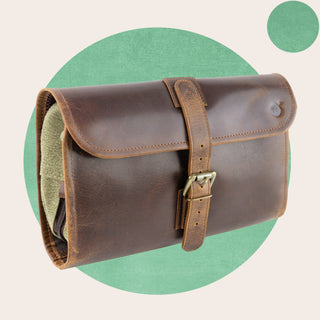Are you off to a new country and need to learn how to pack a travel first aid kit? What should you include? What should you not include, seeing as you are going through customs and the like?
All this and more today as we run through some of the central things every travel first aid kit would be amiss without.
What You Will Need
It can be hard to know where to begin, so here is a list of medical supplies that all first aid kits should not be seen without. Knowing what to keep in your first aid kit is almost as difficult as knowing what to include in your travel toiletry bag.

1. Plasters & Bandages
You surely do not need a professional to tell you how essential these are to basic first aid. A cut or graze is easily one of the most common minor injuries, so you really would be lost without bandages or plasters.
2. Gauze
Gauze is also an essential item in the best first aid kits. It has a multitude of uses, whether applying pressure to a wound, cleaning an injury, soaking up some blood, helping to stop bleeding, or even assisting in the dressing of more minor wounds.
Most first aid kits will feature gauze, for this reason, it can help to fend off an issue for long enough that a professional can be fetched.
3. Crepe Bandages
For injuries a little bigger than a cut, crepe bandages are essential for keeping smaller dressings clean in between the impact and professional attention. A good first aid kit will have at least one or two of these in its midst.
4. Adhesive Tape
The best first-aid kit would be completely amiss without a spool of surgical tape. Of course, in the act of holding down gauze, plasters can also do the trick, but this will be more specialized, doing a better job of it than safety pins might.
5. Scissors
If you are buying a first aid kit, then a pair of small scissors typically comes as standard. These have obvious uses for trimming gauze or bandages to size if you happen to need them. Travel safety tip: do not forget to declare these at customs.
6. Tweezers
Of all the essentials that come as standard in most commercial first aid kits, this will be one of those that are at least somewhat dispensable - most common medical emergencies do not really require tweezers, certainly not as much as band-aids, for example. Make a more compact kit by cutting down on these kinds of things.
7. Antiseptic Wipes
These are also absolutely essential despite being something that many tend to overlook when assembling their own first aid items in one place. What would the healing process be without an antibiotic ointment of some kind? A handful will suffice to do the job of cleaning out wounds and ensuring they do not get infected.
8. Condoms
Aside from the more serious injuries that these can prevent - i.e. sexually transmitted diseases - they are also remarkably effective as containers of water or even as emergency ice packs.
9. Pain Relief Medication
Though not entirely essential, you might at some point be lost without it. Bring along a pack of paracetamol, aspirin, or ibuprofen just in case, for you never know when you might need it.
Anything beyond that should really be saved for when you have a serious injury - in such instances, it is best to leave the administering of it to the professionals.

10. Loperamide
Commonly known as Imodium, this can be a vital way to stop the flow of diarrhea for short periods when you need to be doing something (that would otherwise be ruined by it).
Such medication, of course, does not cure diarrhea but rather stops it for a short period - thus, it should only be used for emergencies. The best way to cure diarrhea is to let everything pass through your system by resting up and drinking lots of water.
11. Antihistamines
Even if you are not necessarily susceptible to allergies, you never know when you might be struck by some insect unforeseeable. Hence why it can be incredibly useful to stay equipped with some antihistamine products, either in cream or tablets.
While they will not necessarily heal reactions to insects in this way, they can go a long way to relieving the insufferable itch.
12. Antibacterial
Certain antibacterial creams can go a long way to accelerating the pace at which a cut heals, something that can be vital if you have commitments and do not want your injury to get in the way.
Not only are these great for helping wounds to heal, but they can also be very effective, like antiseptic products, in working to fight off infections.
Last Word
So, there you have it! Hopefully, you are now feeling a little more able to form your own travel first aid kit. Purchasing one from elsewhere is perfectly fine and will at least give you a container in which to store all your essentials. You are, however, best advised to customize it to your own specific needs and (especially) the location you are headed to.
FAQs Travel First Aid Kit
Can you fly with a first aid kit?
More or less, yes, though there are a number of items you will want to be wary of (or simply leave behind altogether). A lot of commercially available first aid kits will include a pair of small scissors - these might look harmless but will likely set off the alarms as you go through customs. Such things are either replaced with plastic versions or left behind entirely.
What should be included in a first aid kit?
This will depend on where exactly the first aid kit will be used. Indeed, if the wildlife and climate are drastically different in certain parts of the world, then it stands to reason that a first aid kit should be adapted to these different contexts. There are, however, a few things that no first aid kit should be without, such as bandages, antiseptic wipes, gauze, surgical tape, condoms, pain relief medication, and perhaps something containing an antihistamine. This will, of course, vary wherever you are headed or based, but a first aid kit would feature some gaping holes without the items listed above.
How do you make a mini first aid kit?
If a first aid kit is a codification of essential medical supplies, then a mini first aid kit is surely a codification of medical supplies that cannot at all be done without. Granted, the specific environmental context of a place will have to be taken into account when creating a first aid kit. Seeing as there are so many vastly varied biomes around the world featuring different wildlife and climates, it stands to reason that there cannot be a single first aid kit to fulfill every climate and situation.



